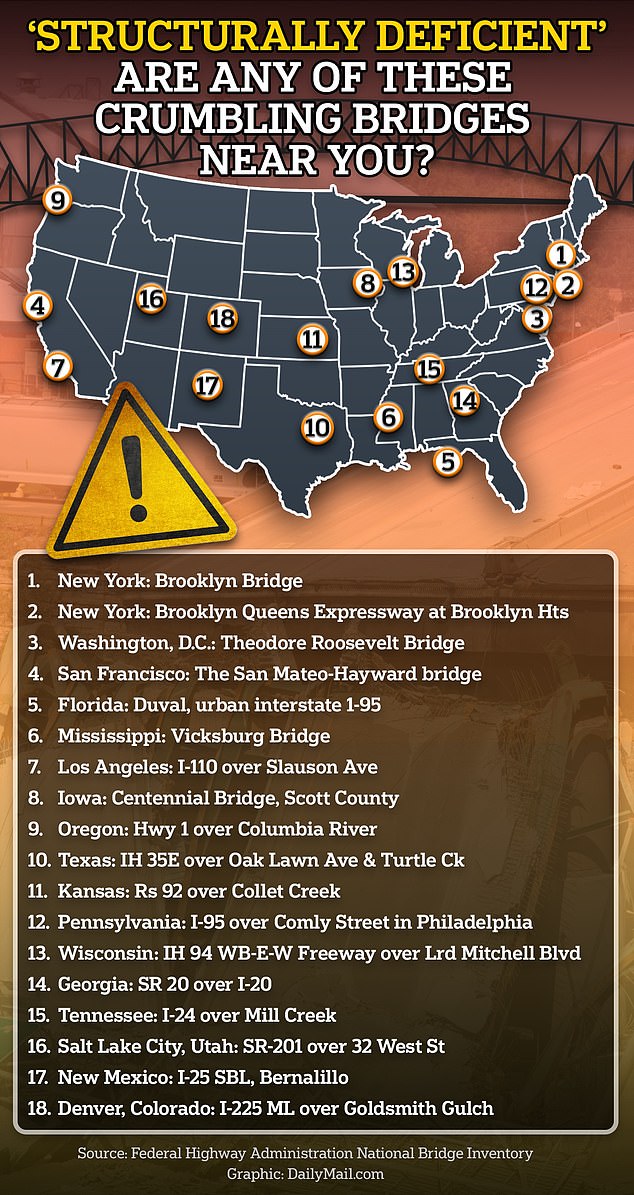The United States is in the midst of a $400 billion infrastructure emergency.
A disturbing new analysis by industry experts concludes that more than 200,000 bridges—a third of the total in the United States and carrying millions of vehicles a day—now need major repairs or complete replacement.
Of that number, up to 42,000 bridges are so poorly maintained that they are considered “structurally deficient” and are at increased risk of abrupt closure or worse.
Some of these compromised structures are among America’s most famous landmarks, including the Brooklyn Bridge in New York and the Theodore Roosevelt Bridge connecting Washington DC to Virginia.
And, thanks to climate change and catastrophic weather events like recent hurricanes Helene and Milton, the problem is getting worse.
Some of America’s most iconic bridges are considered “structurally deficient.”
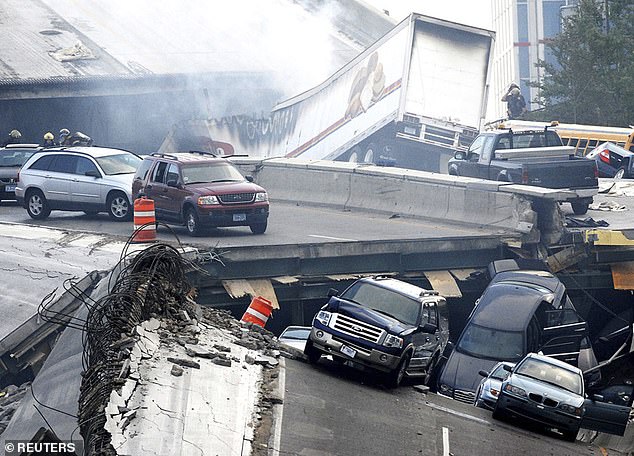
The worst bridge disaster in the United States in recent years was the collapse of the I-35W bridge in downtown Minneapolis in 2007. More than 100 vehicles plunged into the Mississippi River and 13 people died.
In fact, America’s bridges are believed to be “aging” faster than expected, engineers say, with one expert warning that some will be torn apart “like Tinkertoys” amid extreme temperatures and flooding.
“We will see more bridges destroyed by flooding,” Paul Chinowsky, a civil engineering professor at the University of Colorado, told DailyMail.com. “And we will begin to see almost an epidemic of emergency bridge repairs to prevent catastrophic failures.”
The worst disaster in recent memory occurred in 2007, when the crowded I-35W bridge over the Mississippi River in Minneapolis, Minnesota, collapsed during the afternoon rush hour, leaving 13 dead and 145 injured.
Design flaws were blamed for the collapse, which saw 111 vehicles plunge into the river.
The notorious Fern Hollow Bridge collapse in 2022 near Pittsburgh was compared to a scene from a disaster movie after the 450-foot structure broke. A bus was left stranded over a ravine before its terrified passengers were taken to safety.
Embarrassingly, the Fern Hollow Bridge failed on the same day President Joe Biden came to town to promote his $1 trillion Infrastructure Investment and Jobs Act.
The agreement allocated $100 billion for bridges, but even that huge sum is only a quarter of the total needed according to the American Highway and Transportation Builders Association (ARTBA).
The nonprofit ARTBA released its annual Bridge Report in August and found that 36 percent of U.S. bridges, 221,800 in total, need repair, including 76,175 that should be completely replaced.
Seven percent of all bridges in the United States (more than 42,000) are at the highest risk and are described by the Department of Transportation as “structurally deficient.”
“Structurally deficient” does not mean the bridges are at risk of imminent collapse, but the American Society of Civil Engineers says they “pose an increased risk of future closure or weight restriction.”
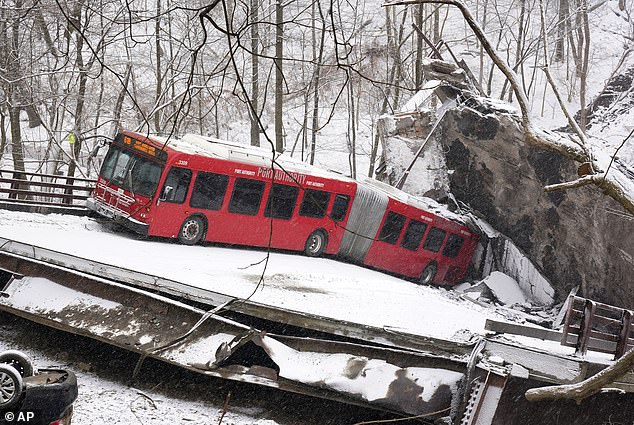
The Fern Hollow Bridge in Pittsburgh looked like a scene from a disaster movie when it collapsed due to lack of maintenance. It failed on the same day President Joe Biden came to town to promote his $1 trillion infrastructure deal.
ARTBA bridge report lists the 250 most used bridges in this category, including one on Interstate 110 in Los Angeles, which is traversed by vehicles 300,000 times a day.
In fact, Los Angeles has four of the 10 busiest bridges at risk. Philadelphia has three in the top ten, while Chicago, Puerto Rico and San Diego have one each.
Behind the crisis lie decades of low investment. The collapse of the Fern Hollow Bridge in Pittsburgh, for example, was caused by “critical failures” in maintenance and oversight, according to a National Transportation Safety Board report.
Had proper procedures been followed, the 447-foot-long structure would have been closed years earlier for major repairs.
NTSB Chairwoman Jennifer Homendy warned at the time that: ‘Only through diligent attention to inspection, maintenance and repair can we ensure that the roads, bridges and tunnels we all traverse every day are safe for the traveling public. There are lives that depend on it.
Civil engineering professor Paul Chinowsky warns that there will be more Fern Hollows to come.
“When you combine deferred maintenance of bridge infrastructure with an increase in climate change events, it is a very dangerous combination,” he told DailyMail.com. ‘Bridges, especially steel ones, are multiple pieces that come together. They are like a very large Tinkertoy set. The place where bridges tend to fail is at the connections, where they go together. And when connections fail, bridges essentially collapse.”
He pointed to the example of the Francis Scott Key Bridge in Baltimore, which catastrophically collapsed in March of this year, killing six people, when it was struck by a container ship.
“Not everything fell as one piece,” Professor Chinowsky said. ‘It broke into many small pieces. It’s the Tinkertoy effect.
Changing weather patterns mean ‘we’re in for a very unpleasant surprise,’ he continued, and emergency repairs (and the delays that accompany them) are becoming routine.
Professor Rick Geddes, director of the infrastructure policy program at Cornell University He said it was “surprising” and “discordant” that the United States, the richest nation in the world, finds itself in this position.
‘People are realizing that a lot of these things are at the end of their useful life. We have to take maintenance seriously. We have to prepare our bridges for the future.”
The sheer age of American infrastructure is a big part of the problem. About 42 percent of the bridges are at least 50 years old, and some are more than twice that.
American highways expanded rapidly during the 1920s, but it was not until the Interstate Highway Act of 1956 under President Eisenhower that the system we know today began to take shape.
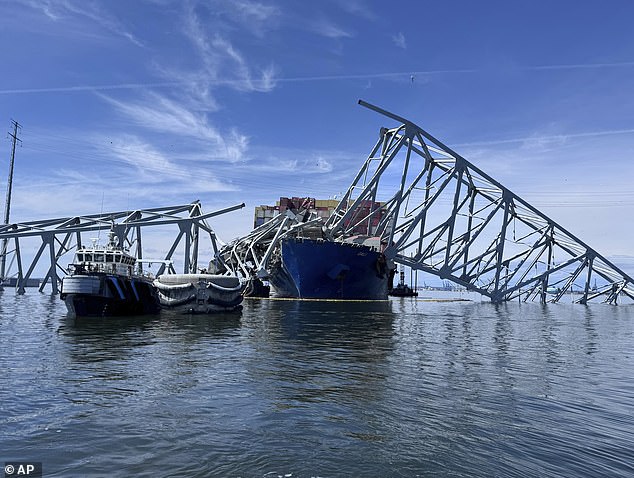
The Francis Scott Key Bridge in Baltimore collapsed “like a tin toy” after being hit by a freighter earlier this year. The ship’s owners face a $100 million federal lawsuit for failing to maintain the ship.

New York’s famous Brooklyn Bridge is among those in need of major repair work.
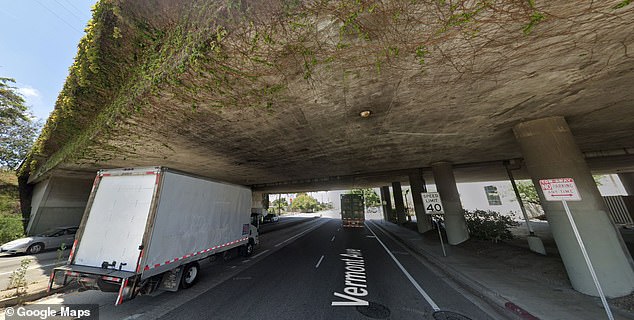
A view of weed-infested Interstate 405 crossing Vermont Avenue in Los Angeles, one of the three busiest “structurally deficient” bridges in the United States.
This was at the height of the Cold War and the need to quickly move military equipment around the country and evacuate major cities in the event of a nuclear attack was the main impetus for the investment.
By the 1980s, the country had moved on to other priorities and the decline of American highways began.
The situation facing ordinary Americans was summed up just a few months ago when, in July, the Washington state Department of Transportation said drivers should use caution when crossing the 103-year-old Fairfax Bridge in Pierce County .
Accompanied by photos of rusted steel beams and missing pieces of wood, the department wrote on Facebook that you “better check the weight” of your vehicle, especially if it is a motor home or pickup truck.
The memo was disturbingly frank: “Some of you may want to know if we plan to replace this bridge,” it said. ‘The answer is complicated.
‘The bridge is competing with other old bridges for funds. Without greater investment in preservation, we will continue to see more bridges with weight lists, longer detours (where applicable), and roads with “difficult road ahead” signs.
The publication noted that there were no detours available.

